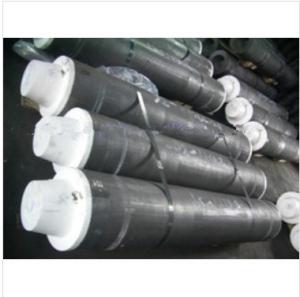When we talk about graphite electrodes, we’re diving into a world of metallurgical magic. These cylindrical wonders are the unsung heroes of the steel industry, playing a crucial role in the production of our favorite metal. But what exactly are graphite electrodes, and why should you care? Let me take you on a journey through the fascinating world of these carbon-based champions.
First things first, let’s break down what graphite electrodes are. At their core, they’re made from pure, high-quality graphite. This isn’t your average pencil lead material; we’re talking about some serious stuff here. Graphite electrodes are specifically designed to withstand extreme temperatures and pressures, making them perfect for the high-octane world of electric arc furnaces (EAFs).
Now, you might be wondering why steel producers would need such specialized equipment. Well, it’s all about efficiency and performance. Graphite electrodes help to reduce production costs, increase the overall quality of the steel, and even lower the environmental impact of the process. That’s right, these little guys are not only workhorses but also eco-friendly.
But here’s the kicker – not all graphite electrodes are created equal. The market is flooded with a variety of options, and as an importer, you need to know what you’re looking for. That’s where this guide comes in. We’re going to explore the different types, qualities, and even some insider tips on how to choose the best graphite electrodes for your needs.
Let’s start with the basics. Graphite electrodes come in two main types: standard and high-power. The difference? It’s all about the amount of energy they can handle. High-power electrodes are designed to handle more electricity, making them more efficient and faster in the steel production process. If you’re looking for a quick turnaround, these are your go-to.
Next up, we need to talk about the quality. The quality of graphite electrodes can vary greatly depending on the raw materials used and the manufacturing process. Some electrodes are made from synthetic graphite, while others use natural graphite. Synthetic graphite is typically more expensive but offers better performance and longevity. Natural graphite, on the other hand, is more affordable but may not last as long. It’s all about finding the right balance for your operation.
And don’t forget about the diameter. Graphite electrodes come in a range of sizes, and the diameter you choose can affect the efficiency of your furnace. Larger diameter electrodes can handle more power and are generally more efficient, but they can also be more expensive. Smaller diameter electrodes are more cost-effective but may require more frequent replacement. It’s all about weighing the pros and cons for your specific situation.
Now, let’s get into the nitty-gritty of importing. Importing graphite electrodes is not as simple as ordering a pizza. There are regulations, quality standards, and logistics to consider. But fear not, because we’re here to help you navigate the process like a pro.
First, you need to understand the regulations in your country. Different countries have different rules when it comes to importing materials, and graphite electrodes are no exception. Make sure you’re aware of any restrictions, tariffs, or special permits you might need.
Quality standards are also crucial. You want to ensure that the electrodes you’re importing meet the required specifications for your operation. This might mean checking for certifications or working with a trusted supplier who can guarantee the quality of their products.
Logistics can be a headache, but with the right planning, it doesn’t have to be. Consider factors like shipping times, costs, and even the reliability of your shipping partner. You don’t want your electrodes to get lost in transit or arrive damaged.
But wait, there’s more! When it comes to importing graphite electrodes, you also need to think about the long-term relationship with your supplier. Building a strong relationship can lead to better pricing, more reliable supply, and even exclusive access to new products or technologies.
In conclusion, importing graphite electrodes may seem like a daunting task, but with the right knowledge and preparation, it can be a smooth and rewarding process. By understanding the different types, qualities, and considerations for importing, you can make informed decisions and ensure that your steel production operation runs efficiently and effectively. So, let’s raise a glass to the graphite electrodes – the unsung heroes of the steel industry!

